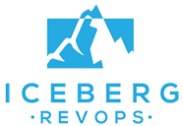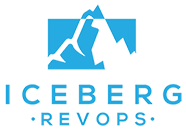CLIENT SUCCESS STORIES
How Iceberg helped TaskRay answer key marketing questions:
"If I gave marketing $10,000, where should they spend it, and what ROI can we expect?"

+
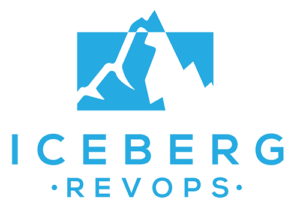
A common hurdle for early-stage SaaS companies like TaskRay is not having an operations infrastructure that measures marketing attribution. They might know what they need, but solving client problems and managing day-to-day operations take priority over improving internal operations.
Iceberg RevOps stepped in as TaskRay’s Revenue Operations partner to guide its evolution beyond limited marketing attribution metrics.
Now with a new data framework and comprehensive attribution dashboard, TaskRay sees the most significant trends in its marketing investments and knows where to doubledown or scale back.

The Challenge
Mike Davis, Vice President of Sales at TaskRay, wanted to know the answers to two deceptively simple questions:
“If I give marketing $10,000, where should they spend it, and what ROI can I expect?”
Mike could see which individual pieces of content generated leads, but he couldn’t easily get to the insights that drive investment decisions.
- What lead source category (e.g. webinars, ebooks) is the most effective at bringing in leads?
- How many times has a prospect engaged with TaskRay?
- What’s the most recent time a prospect interacted with a campaign?
- Did a lead result from inbound or outbound prospecting?
- What was the last marketing touchpoint a prospect had before they converted from a lead to an opportunity?
TaskRay has no shortage of technical ability. But Mike’s ops teams didn’t have the time or full business strategy to own the project of expanding visibility into its own marketing funnel.
About TaskRay
- #1 project management and onboarding tool available on the Salesforce AppExchange
- Automatically connects to relevant CRM data
- Provides businesses in any industry with workflows to onboard new customers faster and more efficiently
The Solution
Iceberg implemented an operational framework that puts guardrails around the most critical attribution data flowing between third party sources like Hubspot to Salesforce.
The end result is a multi-layered view of marketing and campaign performance across the lifecycle of every lead through opportunity creation.
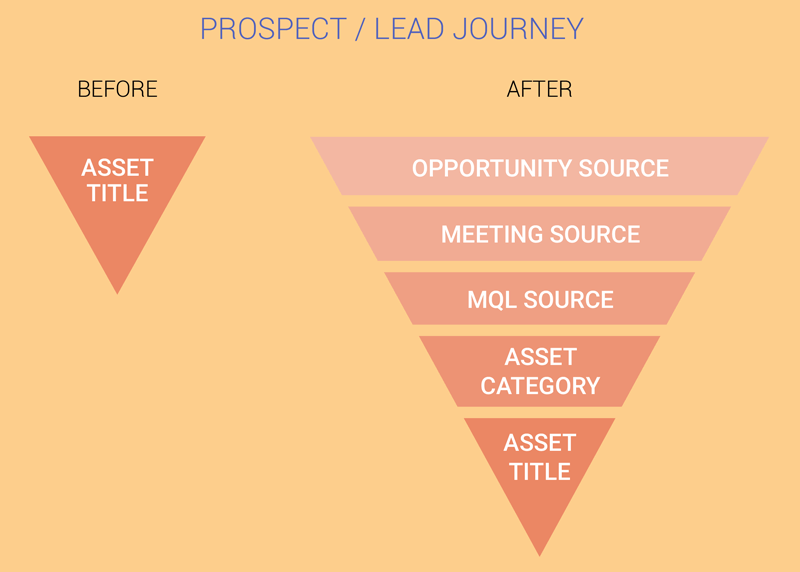
The Results
Expanded visibility into the marketing funnel
TaskRay’s new marketing attribution dashboard displays leads, meetings and opportunities by marketing tactic.
Rather than stitching together the performance of individual assets to understand the big picture, TaskRay’s dashboard provides an immediate 30,000-foot view of marketing attribution that drives faster and more accurate investment decisions.
“[Before Iceberg], we could see how individual webinars performed, but we never knew how webinars as a class performed. Being able to see results by asset type reinforced our need to host more webinars because that family of assets performs really well for us.”
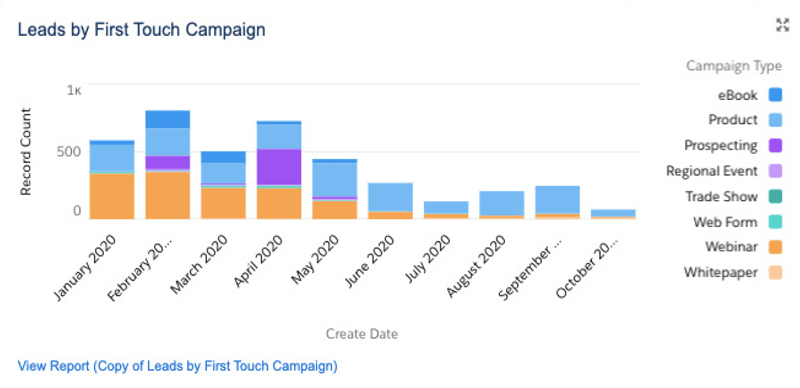
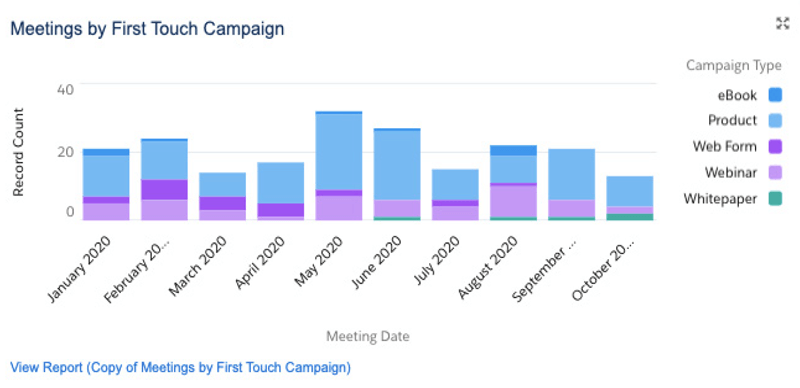
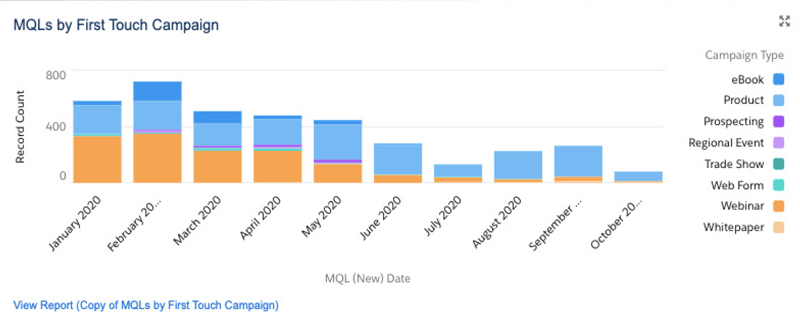
Improved prioritization for SDRs
TaskRay’s also uses these insights to improve the sophistication of how SDRs prioritize lead follow-up.

“When our SDR comes in and she has a queue of 10 leads, she’s now informed on which ones to hit first because we know which sources produce the strongest leads.”
Ready for Growth?
Predictive sales analytics help organizations know what they need to do to keep growing.
More Client Success Stories
What's happening with our leads?
Leak-free lead tracking and meeting follow-up reports
“One of the biggest wins for me has been the clarity provided in tracking the number of first meetings completed as a key metric for capacity.”
Mike Davis, TaskRay
What's our return on a $10,000 marketing investment?
Eye-popping funnel visibility and a new marketing attribution dashboard
“The marketing attribution dashboard is a world-class level of insight into our pipeline.”
Mike Davis, TaskRay
We're On Your Team

Talk with Taft
Grab free 1:1 time with Iceberg’s founder and principal strategist, Taft Love. This is time for you as a sales or marketing leader to get candid advice on your most urgent operational challenges.
(Several of Iceberg’s customers book time every month to get Taft’s take on their ops.)
Reach Out to Us
Send an email and you’ll hear from us soon.
Key Report Definitions
This could be an FAQ-style dropdown - could also be updated with relevant sales definitions and be placed across all case study content
Lead Source
This field represents the means by which a person’s information was originally obtained by the company. Lead Source is the most broad attribution category. It gives a general idea of how a prospect interacted with the sales or marketing teams.
The values in Lead Source should rarely change, and only marketing should control them. Limiting this field to a small number of non-specific values is important for reporting purposes—these values make it easy to quickly under- stand things like whether the prospect interacted with sales and marketing.
Examples:
- Ebook
- Product
- Prospecting
- Regional event
- Trade show
- Web form
- Webinar
- Whitepaper
Campaign Source
Campaign Source is the most specific level of attribution detail. It tracks the specific campaign associated with a prospect’s action. Every Campaign Source value aligns with a Salesforce campaign. Campaign Source values change constantly—a new one is added every time Marketing creates a new campaign in Salesforce. This is the ap- propriate field for highly specific values like: “Sales 3.0 Conference 2020”.
Campaign Source values are created whenever you create a new campaign in Salesforce. Once a campaign is created and activated in SFDC, you can create
a workflow in HubSpot that updates all relevant contacts with the new value. For example, if you create and activate a new SFDC campaign called “Shipping Best Practices Webinar – 11/05/2024”, all prospects who fill out a landing page form to sign up should enter a HS workflow that marks Campaign Source field(s) with the name of this campaign.
Lead Source Detail
Lead Source Detail is the next level of detail after Lead Source. If Lead Source is “Website”, then Lead Source Detail tells you how the prospect found the website (ex: “Paid” or “SEO”).
Lead Source Detail values change more often than Lead Source, but they should still remain clean and tightly managed by marketing only.
As with Lead Source, overly specific values (ex: “Sales 3.0 Conference 2024”) cause reports to become quickly cluttered.
MQL Date
This is the first or last date (depending on the field name) when a prospect became a Marketing Qualified Lead. It’s synonymous with “when Marketing passed a prospect off to Sales,” which means MQL fields are critical in several ways:
- MQL Dates are used in reporting to un- derstand which prospects were passed to sales this week/month/quarter.
- Updates to Last MQL Date trigger work- flows that assign leads and contacts to the sales team.
# Times MQL
A prospect can become an MQL multiple times. For example, a prospect may fill out a demo request, then never respond to sales’ calls or emails. Six months later, if they fill out a demo request form again, they will become an MQL and will be passed to the sales team again. This field tells you how many times a prospect has taken an action that made them an MQL.
First [lead source] / [MQL date] for each lead, contact, and account
The “First” version of each attribution field shows how the prospect entered the database.
This is synonymous with “Original,” so for some leads and contacts this value could be years old.
